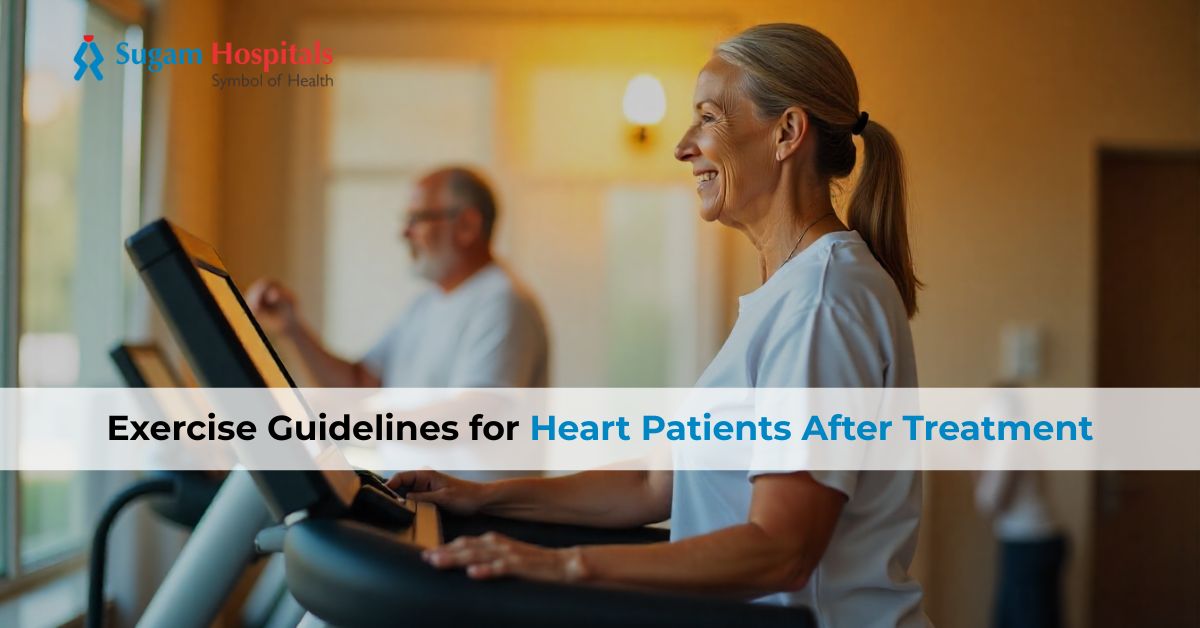Exercise Guidelines for Heart Patients After Treatment

Exercise Guidelines for Heart Patients After Treatment
September 11, 2025 by adminRecovering from heart disease is about more than medication and medical appointments. It’s about making safe, healthy lifestyle changes for continued health. Often the best option is to safely reintroduce safe, organized physical activity.
Many heart patients feel overwhelmed when thinking about physical activity again, so guidance with this becomes an essential part of recovery. And knowing what type of activity is safe, reasonable amounts of activity and when to stop is just as important in preserving the patient’s health and improving fitness.
Why Exercise Matters After Heart Treatment
Exercise not only strengthens the heart muscle, improves circulation, and reduces the risk of future cardiac events, but it also lowers cholesterol, regulates blood pressure, and helps maintain a healthy weight. And beyond the physical advantages, exercise reduces stress and improves mood, and can be especially valuable for those who have experienced a serious medical episode.
Even with a fragile feeling after a medical treatment, structured exercise actually facilitates healing! Doctors are often recommending exercise as part of a larger program of cardiac rehabilitation, and the particular exercise is prescribed according to each participant’s own health profile.
Starting Slowly: The First Steps
The type and intensity of exercise is a function of treatment and its intent – whether to treat through surgery, through angioplasty or through medications. Most often, patients will engage in some form of light activity such as short walks, or gentle stretching. The most important aspect of all of this activity is to progress gradually.
Avoiding pressure on the heart can mean avoiding over-exercising and overdoing. It becomes very essential when moving back into activity to be mindful about pacing.
In those early weeks, consider consistency over intensity. Taking a short walk each day (say for 10-15 minutes a day) and then progressing the time compared to trying to do an hour of vigorous exercise all at once from the beginning, is often the safest and smartest progress for recovering hearts. If the walk is a comfortable pace and the patient can talk during their walk – we know we are at a safe level of activity.
Recommended Types of Exercise
Not every form of exercise is appropriate for heart patients. Low-impact forms of exercise that build cardiovascular endurance, without undue stress on the body, are thought to be the safest.
Walk and Light Aerobic Exercise:
Walking is the most natural and easiest exercise and the most beneficial. It can improve your stamina and circulation and makes it easy to manage your distance and pace. Stationary cycling or light swimming may also be recommended (with doctor approval).
Light resistance training :
Either using body weight or lightweight dumbbells promotes muscle building and muscle maintenance by encouraging joint health. When exercising, the key focus is controlled and steady movements, rather than heavy lifting.
Flexibility and balance exercises:
Passive and gentle stretching and yoga postures (with options) improve flexibility, reduce stiffness, and support balance, especially important in older patients. Each modality of exercise should be introduced gradually and by a medical practitioner if possible.
What to Avoid
Avoid high-intensity workouts, heavy weightlifting, or workouts that cause you to stop breathing, at early stages of your recovery. In addition, working out in extreme heat or cold will create more stress on your heart. Stopping activity and consulting with a medical provider after exercise, if you have chest pain, dizziness, other unusual shortness of breath, severe fatigue, or noticeable heart palpitations is a sign to stop working out and consult with a doctor.
Tracking Progress
Keeping track of heart rate and blood pressure, or how the body is communicating during and after exercise, is very important. Many patients find that a fitness tracker or a simple exercise diary help with tracking progress. Many doctors will suggest that you stay within a threshold heart rate, which is sometimes modified over the first couple of months of recovery.
Cardiac rehabilitation programs will often contain supervised sessions and gradually introduce changes to your recovery exercise plan, while helping you develop strength and confidence with your body and heart. Not only are these programs helpful because they develop a routine, but they also provide a safety bridge where the professionals are available when needed.
Not only is exercise safe for most heart patients who have been treated, it is also one of the most important aspects of recovery and ongoing health. Going slow, picking a suitable type of activity, and monitoring for warning signs are all steps to keep you secure and confident during your recovery. For those looking for personalized plans for recovery and for safe exercise guidance, a visit to the Best Cardiologist In Chennai at Sugam Hospital provides expert and supported care in your journey to improve your heart health.

